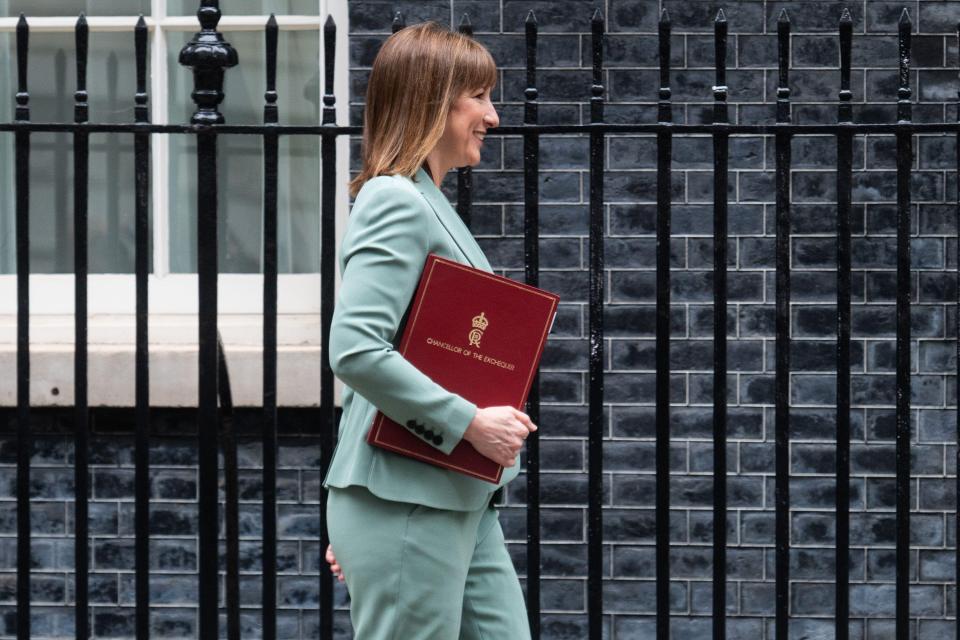American Express Stock Soars — Why It Could Go Even Higher.
A blowout quarter and a premium customer mix are forcing the market to revisit what this franchise is worth.
American Express (AXP 0.70%) is a global payments company with a different model from the card networks most investors know. Unlike Visa and Mastercard, which mainly run transaction networks and avoid lending, American Express issues cards, extends credit, and earns meaningful fee income from premium customers. That difference mattered on Friday, when shares jumped after the company posted strong third-quarter results and lifted its full-year outlook.
Is this move noise or the start of a repricing toward peer-like valuations? I think the latter. With spending and fee income looking good and credit holding steady, it wouldn’t be surprising to see the stock’s valuation multiple expand significantly over time, catching up with the valuation multiples of Visa and Mastercard.

Image source: Getty Images.
Impressive results
It wasn’t surprising to see shares jump following the release of the company’s latest financial results. Third-quarter revenue rose 11% year over year to $18.4 billion, and earnings per share increased 19% to $4.14. Card member spend growth accelerated to 9% (up from 7% growth in Q2). Management also raised full-year guidance, saying it expects 9% to 10% revenue growth and earnings per share of $15.20 to $15.50.
Driving the quarter, the company’s cardmember fee income climbed 18% year over year as more customers adopted its premium cards, which offer travel and lifestyle perks in exchange for annual fees. Additionally, net interest income rose 12%.
Credit metrics look good, too. American Express’s provision for credit losses declined year over year on a lower reserve build. And the company’s net write-off rate held at 1.9%, flat from a year ago and from the prior quarter. For a credit card issuer that keeps credit risk on its own balance sheet, steady write-offs and a lighter reserve build point to disciplined underwriting even as spend grows rapidly.
What makes American Express different
Of course, American Express doesn’t differentiate itself from Visa and Mastercard just by extending credit and charging substantial card fees across its flagship products. The company’s value proposition in the premium space is perhaps the company’s greatest edge. This is fresh on investors’ minds because American Express recently refreshed its U.S. consumer and business Platinum products — and it’s working; new U.S. Platinum account acquisitions in the three weeks following the refresh doubled versus pre-refresh levels, management said in its third-quarter update. Considering that the refresh came with a substantially higher annual fee, that kind of customer response suggests pricing power with the customers who spend the most, use travel benefits, and stay loyal.
Driving home just how premium American Express’s cardmembers are, they spend an average of three times more on their cards than the average spend per card on other networks.
Valuation still trails far behind Visa and Mastercard
Even after the rally, American Express trades at a lower price-to-earnings multiple than the pure networks Visa and Mastercard. The two peers earn higher valuations for their capital-light models, which carry less credit risk and produce steady cash flow. That premium makes sense.
Depending on how you look at it, however, there are also reasons that American Express may deserve a premium. Visa and Mastercard may take on less risk, but American Express participates in more of the profit pool per dollar of spend and has more control over the customer’s overall experience — an advantage that is likely key to helping the company cater to higher spenders.
Ultimately, if American Express can show that its approach is leading to a better customer experience, including higher engagement and greater lifetime customer spend while maintaining good credit metrics, investors may be willing to narrow the gap between American Express’s valuation multiple and its pure network peers.
Of course, being an integrated payments company requires carefully balancing underwriting and incentives to bolster cardmember spending. A surprise rise in delinquencies would pressure earnings. Likewise, a slowdown in the macroeconomic environment could hit discount revenue, customer acquisition trends, and even lending. These factors could keep the valuation discount in place longer than bulls expect.
Still, there’s a lot to like — especially given the stock’s fair price-to-earnings multiple of about 23. This compares to Visa and Mastercard’s price-to-earnings ratios of 34 and 38, respectively. With strong financials in the context of its valuation, American Express stock looks compelling. Revenue is growing at double-digit rates, spend is accelerating, and fee income tied to its premium cards is doing the heavy lifting. Management’s playbook of regularly refreshing its products and deepening engagement while broadening acceptance shows up in the numbers and in guidance.
If American Express’s momentum persists, a narrower valuation gap with Visa and Mastercard makes sense. Friday’s surge looks less like a spike and more like the start of a reset in how investors price this franchise. After years of consistent growth and strong credit metrics, investors might start seeing the company’s integrated payment model as a key competitive advantage worthy of a significantly higher premium.
American Express is an advertising partner of Motley Fool Money. Daniel Sparks and his clients have positions in American Express. The Motley Fool has positions in and recommends Mastercard and Visa. The Motley Fool has a disclosure policy.












